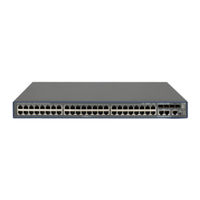H3C S3600V2 SERIES Manuals
Manuals and User Guides for H3C S3600V2 SERIES. We have 3 H3C S3600V2 SERIES manuals available for free PDF download: Layer 2-Lan Switching Configuration Manual, Irf Command Reference, Installation, Quick Start
H3C S3600V2 SERIES Layer 2-Lan Switching Configuration Manual (281 pages)
Brand: H3C
|
Category: Network Router
|
Size: 2 MB
Table of Contents
Advertisement
Advertisement
Advertisement


